Sushi is a popular Japanese dish that has gained immense popularity worldwide. It is made with vinegared rice and a variety of ingredients, including raw fish, vegetables, and seaweed. One of the key ingredients in sushi is raw fish, and not all fish are suitable for raw consumption. This is where the term “sushi grade fish” comes into play.
Sushi grade fish is a term used to describe fish that is safe to eat raw. Even though there aren’t any official rules governing this term, most fish vendors adopt it to show that their stock is both fresh and high-quality. They also take extra precautions to reduce the chances of foodborne illnesses.
While it is important to use fresh fish for sushi, not all fresh fish are sushi grade. Understanding what sushi grade fish is and how to identify it is crucial for preparing delicious and safe sushi.
Key Takeaways
- Sushi grade fish is a term used to describe fish that is safe to eat raw.
- Not all fresh fish are sushi grade. It is important to understand what sushi grade fish is and how to identify it.
- The term “sushi grade fish” doesn’t have official rules, but most fish vendors use it to signal that their supply is extremely fresh, top-notch quality, and handled with extra care to minimize the risk of foodborne illnesses.
Understanding Sushi Grade Fish
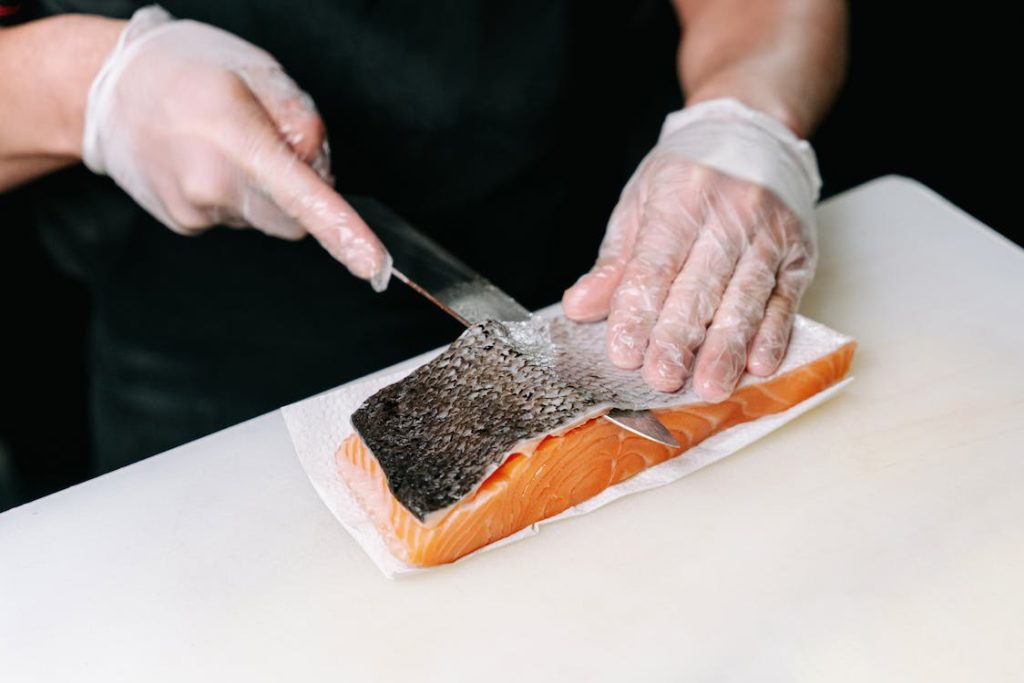
Sushi grade fish is a term used to describe fish that is safe to consume raw. It is the best quality you can find at a sushi restaurant, chosen and handled with great care to reduce the chances of foodborne illnesses. In this section, we will discuss what sushi grade fish is, how it is graded, and how to identify it.
What is Sushi Grade Fish?
Sushi grade fish is not a regulated term, so it can be challenging to define. Generally, it refers to fish that is of the highest quality and freshness and is handled and stored with extra care. The fish must be free of parasites and bacteria that could cause food poisoning.
How is Sushi Grade Fish Graded?
Fish wholesalers grade fish based on its appearance, texture, and fat content. The highest quality fish is assigned Grade 1, which is typically sold as sushi grade fish.
In Japan, where sushi originated, the term sushi grade refers to fish that have been frozen to kill parasites. The fish is then thawed and used for sushi. In the United States, sushi grade fish is often sold fresh, but it may also be frozen and thawed.
How to Identify Sushi Grade Fish
When purchasing sushi grade fish, look for the following characteristics:
- Bright, clear eyes
- Shiny, metallic skin
- Firm, elastic flesh
- Fresh, clean smell
If you are purchasing fish that has been previously frozen, look for fish that has been flash-frozen to preserve its quality. Sushi grade fish tends to come with a higher price tag compared to other fish varieties. But it is worth the investment to ensure that you are consuming safe, high-quality fish.
In conclusion, sushi grade fish is the highest quality fish available for raw consumption at sushi restaurants. It is carefully selected and handled to minimize the risk of foodborne illnesses. When purchasing sushi grade fish, look for bright, clear eyes, shiny skin, firm flesh, and a fresh smell.
Types of Sushi Grade Fish
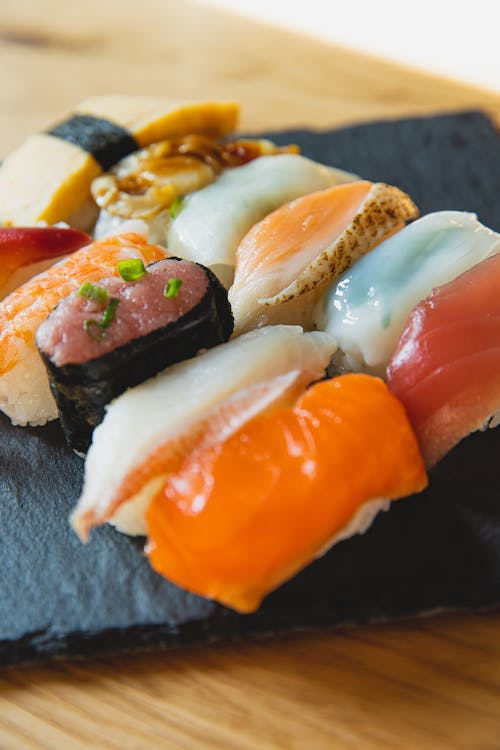
When it comes to sushi, the type of fish used is crucial. Sushi-grade fish is the highest quality fish that can be eaten raw. It is important to note that not all fish can be considered sushi-grade. The following are some of the most commonly used sushi-grade fish:
Tuna
Tuna is one of the most popular sushi-grade fish. It has a rich, meaty flavor that is perfect for sushi. Tuna is graded based on its color, texture, and fat content. The best grade of tuna for sushi is known as “toro,” which is the fatty belly of the fish.
Salmon
Salmon is another popular sushi-grade fish. It has a delicate flavor and a buttery texture. The best salmon for sushi is known as “sake,” which is the belly of the fish.
Hamachi
Hamachi, also known as yellowtail, is a popular fish in sushi. It boasts a gentle, buttery taste and a sturdy texture. The finest hamachi for sushi is referred to as “toro,” originating from the fish’s fatty belly.
Halibut
Halibut, a tender and flaky fish often used in sushi, features a subtle taste and firm texture. The optimal halibut for sushi is called “hirame,” sourced from the fish’s belly.
Flounder
Flounder is a delicate, white fish that is commonly used in sushi. It has a mild flavor and a flaky texture. The best flounder for sushi is known as “hirame,” which is the belly of the fish.
Mackerel
Mackerel is a strong-flavored fish that is commonly used in sushi. It has a rich, oily texture and a bold flavor. The best mackerel for sushi is known as “saba,” which is the belly of the fish.
Seabass
Seabass is a mild, white fish that is commonly used in sushi. It has a delicate flavor and a firm texture. The best seabass for sushi is known as “suzuki,” which is the belly of the fish.
Yellowtail
Yellowtail, or hamachi, is a type of fish that is commonly used in sushi. It has a mild, buttery flavor and a firm texture. The best yellowtail for sushi is known as “toro,” which is the fatty belly of the fish.
When it comes to sushi-grade fish, it is important to note that not all fish are created equal. Some fish are more suitable for sushi than others. It is also important to source sushi-grade fish from reputable suppliers to ensure that it is safe to eat.
Quality Indicators of Sushi Grade Fish
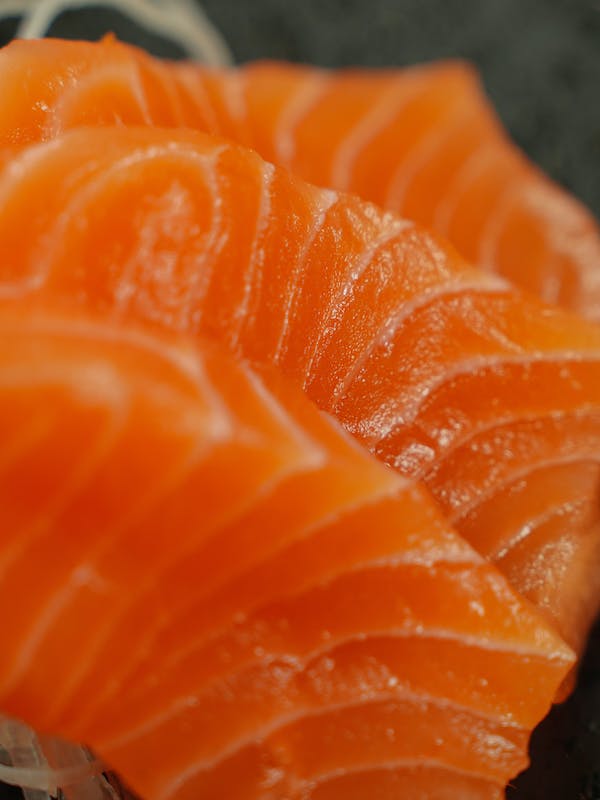
When considering sushi grade fish, specific quality indicators can assist you in determining if the fish is safe and appropriate for consuming raw. Here are some of the key factors to look for:
Color
The color of the fish can be a good indicator of its freshness and quality. Generally, sushi grade fish should have a bright, vibrant color that is consistent throughout the flesh. For example, tuna should be a deep, rich red color, while salmon should be a bright orange-pink. If the fish looks dull or discolored, it may not be fresh enough for raw consumption.
Smell
Another important quality indicator is the smell of the fish. Sushi grade fish should have a clean, fresh scent that is not overly fishy or pungent. If the fish smells off or has a strong odor, it may not be suitable for raw consumption.
Taste
Of course, the taste of the fish is the ultimate quality indicator. Sushi grade fish should have a clean, fresh taste that is not overly fishy or gamey. The texture should be firm and slightly chewy, but not tough or rubbery.
In addition to these specific quality indicators, there are a few other factors to consider when looking for sushi grade fish. For example, the fish should be handled and stored properly to ensure maximum freshness and safety. It should also come from a reputable source that specializes in high-quality, fresh seafood.
Overall, when it comes to sushi grade fish, it’s important to be discerning and knowledgeable about the quality indicators. This ensures that you are getting the freshest, highest-quality fish possible.
Safety Concerns with Sushi Grade Fish
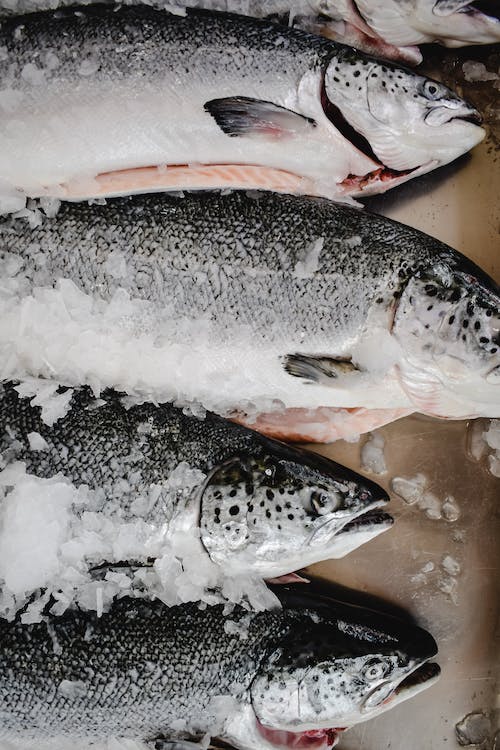
When it comes to consuming raw fish, safety concerns are always at the forefront. Sushi-grade fish refers to fish that is safe for raw consumption, but it’s important to understand that the term is unregulated. Therefore, it’s crucial to take the necessary precautions to ensure that the fish you’re consuming is safe to eat.
Parasites
Raw fish can contain parasites, such as anisakis and tapeworms, which can cause food poisoning. Consuming infected fish can lead to abdominal pain, nausea, vomiting, and diarrhea. To reduce the risk of parasitic infections, it’s important to freeze the fish before consuming it. The FDA recommends freezing fish at -4°F for at least seven days or at -31°F for 15 hours to kill parasites.
Cross-Contamination
Cross-contamination is another concern when it comes to sushi-grade fish. It’s important to ensure that the fish is not contaminated with bacteria from other foods or surfaces. Thoroughly clean all surfaces and utensils that come into contact with the fish and avoid using the same cutting board or knife for other foods.
Spoilage
Spoilage is another concern with sushi-grade fish. It’s important to trust your fish vendor and ensure that the fish is fresh and properly handled. Look for fish that is firm, has a bright color, and smells fresh. If the fish smells sour or has a slimy texture, it’s likely spoiled and should not be consumed.
In summary, consuming sushi-grade fish can be safe as long as you take the necessary precautions. To reduce the risk of food poisoning effectively, freeze the fish to eliminate parasites, prevent cross-contamination, and maintain its freshness. Trusting your fish vendor and being aware of the risks associated with consuming raw fish can also help ensure a safe and enjoyable dining experience.
Regulations and Guidelines for Sushi Grade Fish
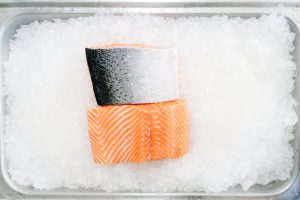
When it comes to sushi grade fish, there are a few regulations and guidelines to keep in mind. These guidelines are in place to ensure that the fish is safe for raw consumption and to limit the risk of foodborne illnesses.
FDA Guidelines
The US Food and Drug Administration (FDA) has guidelines in place for the safe handling and preparation of seafood, including sushi grade fish. These guidelines state that fish intended to be consumed raw must be frozen and stored at a temperature of -20°C (-4°F) or below for a minimum of 168 hours (7 days) to destroy any potential parasites. This freezing process is important because it can kill any parasites that may be present in the fish.
Parasite Destruction Guarantee
Some fish vendors may offer a “parasite destruction guarantee” for their sushi grade fish. This guarantee means that the fish has been frozen at a precise temperature for a specific duration to eliminate any possible parasites. However, it’s worth noting that this guarantee isn’t overseen by any governing body. Instead, it’s left to the vendor’s discretion to define what qualifies as “parasite destruction.”
Unregulated Terms
The term “sushi grade” is an unregulated term used to identify fish that is deemed safe for raw consumption. This term is not defined by any governing body, so it’s up to the vendor to determine what they consider to be “sushi grade.” Some vendors might use the term to show that their supply is the freshest, highest quality, and handled with extra care to minimize the risk of foodborne illnesses.
To wrap up, even though there are guidelines for safely handling and preparing sushi grade fish, keep in mind that the term “sushi grade” lacks regulation. Vendors decide what qualifies, so it’s important to research and opt for a reliable vendor when buying fish for raw consumption.
Preparation of Sushi Grade Fish at Home

Preparing sushi grade fish at home is a great way to enjoy fresh, high-quality fish without having to go to a restaurant. However, it is important to know how to properly prepare the fish to ensure it is safe to eat. Here are some tips for preparing sushi grade fish at home.
Freezing
Freezing the fish is an important step in preparing sushi grade fish at home. Freezing kills any parasites that may be present in the fish, making it safe to eat raw. The FDA recommends freezing fish for at least 24 hours at -4°F (-20°C) or below before serving raw.
If you have a flash freezer, you can freeze the fish quickly to preserve its freshness. Flash freezing also helps to prevent ice crystals from forming, which can damage the texture of the fish.
Cutting
When cutting sushi grade fish, it is important to use a sharp knife and a clean cutting board. A dull knife can damage the delicate flesh of the fish, while a dirty cutting board can introduce bacteria.
To cut the fish, start by removing the skin and any bones. Then, slice the fish against the grain into thin, bite-sized pieces. The thickness of the slices will depend on personal preference, but they should be uniform in size for even cooking.
Serving
Once the fish is cut, it can be served with sushi rice and other accompaniments. It is important to keep the fish cold until it is ready to be served to prevent bacterial growth. You can place the fish on a bed of ice or in a chilled bowl to keep it cold.
When serving sushi grade fish at home, it is important to use the freshest fish possible. If you are unable to find fresh fish, frozen fish can be a good alternative. Just be sure to thaw it properly before using it in sushi.
By following these tips, you can enjoy delicious and safe sushi grade fish at home.
Where to Buy Sushi Grade Fish

When it comes to buying sushi grade fish, it’s important to ensure that the fish is fresh and safe to consume raw. Here are some options for where to buy sushi grade fish:
Local Seafood Retailers
One option is to check out your local seafood retailers. These retailers often have a selection of fish that are safe to consume raw. It’s important to ask the fishmonger if the fish is sushi grade and to ensure that it was handled properly.
Online Seafood Delivery
Another option is to order sushi grade fish online. There are several companies that specialize in delivering fresh seafood straight to your doorstep. Here are a few reputable companies to consider:
- Sea 2 Table. This company sources sustainable seafood from small-scale fishermen and delivers it straight to your door.
- Sizzlefish. Sizzlefish offers a variety of seafood options, including sushi grade fish, that are sustainably sourced and delivered to your doorstep.
- Catalina Offshore Products. Catalina Offshore Products is a company that specializes in sushi grade fish and seafood. They offer a wide variety of options and ship nationwide.
- Fulton Fish Market. Fulton Fish Market is an online seafood marketplace that offers sushi grade fish and other fresh seafood options. They work directly with fishermen and offer overnight shipping.
When buying sushi grade fish, it’s important to choose a reputable supplier that sources their fish from sustainable sources and handles it properly. This ensures that the fish is safe to consume raw and of the highest quality for your sushi dishes.
Sushi Grade Fish in Different Dishes
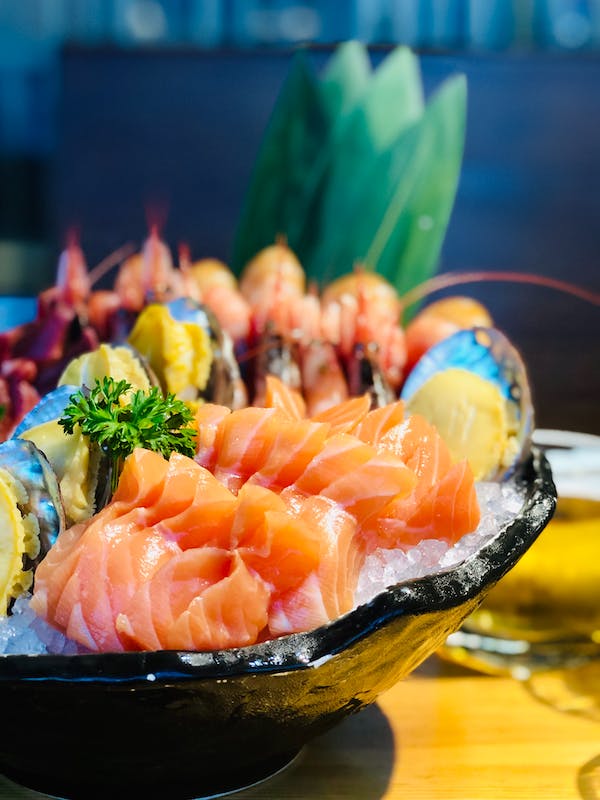
When it comes to sushi grade fish, it’s not just for sushi rolls. This high-quality fish can be used in a variety of dishes, including sashimi, poke, crudo, and ceviche. Each dish has its own unique preparation method, but they all require the freshest and highest quality fish.
Sashimi
Sashimi is a Japanese dish that consists of thinly sliced raw fish served with soy sauce and wasabi. Sashimi-grade fish is essential for this dish, as it is the highest quality fish that can be eaten raw. Common fish used for sashimi include tuna, salmon, and yellowtail.
Poke
Poke is a Hawaiian dish that consists of diced raw fish, typically tuna or salmon, mixed with vegetables and a soy-based sauce. Sashimi-grade fish is also used in poke, as it is the safest and most delicious option for raw fish dishes. Other ingredients in poke can include avocado, seaweed, and caviar.
Crudo
Crudo is an Italian dish that consists of thinly sliced raw fish served with olive oil and citrus. Similar to sashimi, crudo requires the freshest and highest quality fish available. Common fish used for crudo include tuna, salmon, and scallops.

Konnichiwa! (Hello!) I'm Pat Tokuyama, a Japanese tofu cookbook author, who travels for music, food, and adventure. If you like Japanese tea, checkout some of the newestorganic japanese tea, matcha bowls and noren and more!
** Curious about the Plant Based Japanese Cooking Club? ** Learn more here!
Ceviche
Ceviche is a Latin American dish that consists of raw fish marinated in citrus juices, typically lime or lemon. The acid in the citrus juice “cooks” the fish, making it safe to eat. Sashimi-grade fish is also used in ceviche to ensure the best taste and texture. Other ingredients in ceviche can include shrimp, vegetables, and avocado.
It’s important to note that “sushi grade” is a marketing term and not a regulated industry standard. Therefore, it’s important to buy fish from a reputable source and ask questions about the fish’s origin and handling. Farmed salmon is not recommended for raw consumption, as it can contain parasites and other harmful bacteria.
In summary, sushi grade fish can be used in a variety of dishes beyond just sushi rolls. Sashimi, poke, crudo, and ceviche all require the freshest and highest quality fish available. When purchasing fish, it’s important to buy from a reputable source and ask questions about the fish’s origin and handling.
 FUNGYAND Bamboo Sushi Rolling Mat
FUNGYAND Bamboo Sushi Rolling Mat If you're yearning for that traditional touch in your sushi-making adventures, the FUNGYAND Bamboo Sushi Rolling Mat is your ideal companion. Crafted from bamboo, this rolling mat not only exudes authenticity but also offers a natural feel that sushi enthusiasts adore. It's the perfect tool to roll your favorite sushi creations with finesse, connecting you with the timeless art of sushi making.


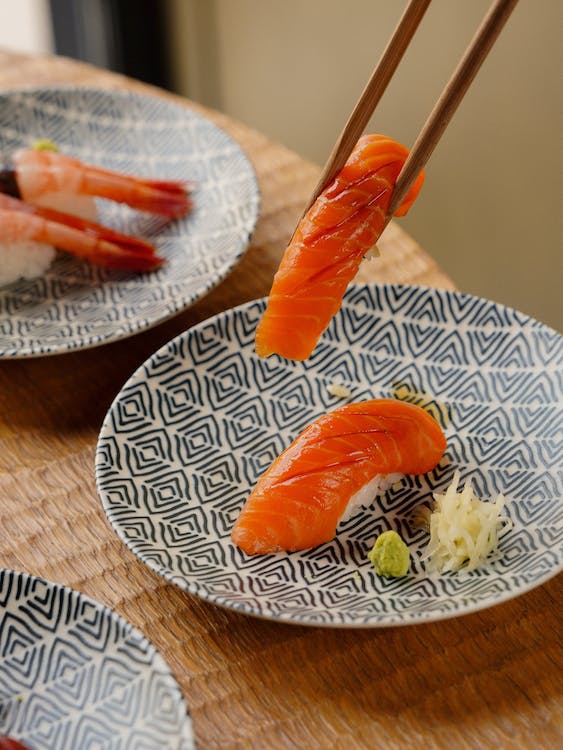





Konnichiwa! (Hello!) I'm Pat Tokuyama, a Japanese tofu cookbook author, who travels for music, food, and adventure. If you like Japanese tea, checkout some of the newestorganic japanese tea, matcha bowls and noren and more!
** Curious about the Plant Based Japanese Cooking Club? ** Learn more here!